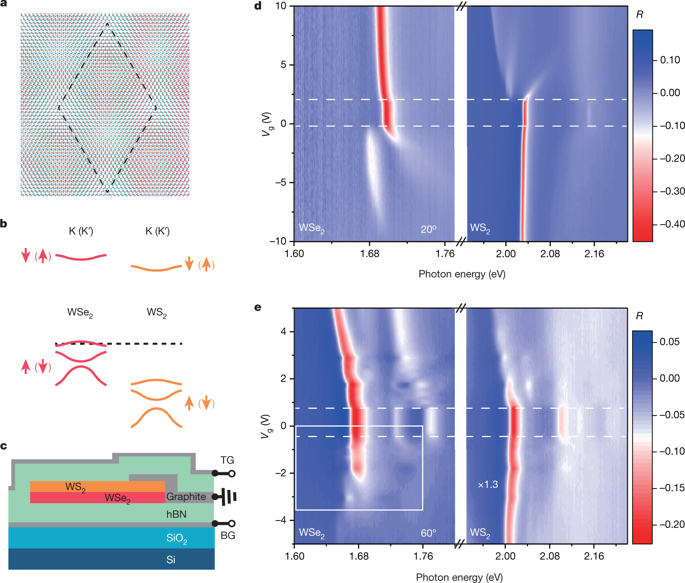Nature ( IF 50.5 ) Pub Date : 2020-03-18 , DOI: 10.1038/s41586-020-2085-3 Yanhao Tang 1 , Lizhong Li 1 , Tingxin Li 1 , Yang Xu 1 , Song Liu 2 , Katayun Barmak 3 , Kenji Watanabe 4 , Takashi Taniguchi 4 , Allan H MacDonald 5 , Jie Shan 1, 6, 7 , Kin Fai Mak 1, 6, 7

|
The Hubbard model, formulated by physicist John Hubbard in the 1960s1, is a simple theoretical model of interacting quantum particles in a lattice. The model is thought to capture the essential physics of high-temperature superconductors, magnetic insulators and other complex quantum many-body ground states2,3. Although the Hubbard model provides a greatly simplified representation of most real materials, it is nevertheless difficult to solve accurately except in the one-dimensional case2,3. Therefore, the physical realization of the Hubbard model in two or three dimensions, which can act as an analogue quantum simulator (that is, it can mimic the model and simulate its phase diagram and dynamics4,5), has a vital role in solving the strong-correlation puzzle, namely, revealing the physics of a large number of strongly interacting quantum particles. Here we obtain the phase diagram of the two-dimensional triangular-lattice Hubbard model by studying angle-aligned WSe2/WS2 bilayers, which form moiré superlattices6 because of the difference between the lattice constants of the two materials. We probe the charge and magnetic properties of the system by measuring the dependence of its optical response on an out-of-plane magnetic field and on the gate-tuned carrier density. At half-filling of the first hole moiré superlattice band, we observe a Mott insulating state with antiferromagnetic Curie–Weiss behaviour, as expected for a Hubbard model in the strong-interaction regime2,3,7,8,9. Above half-filling, our experiment suggests a possible quantum phase transition from an antiferromagnetic to a weak ferromagnetic state at filling factors near 0.6. Our results establish a new solid-state platform based on moiré superlattices that can be used to simulate problems in strong-correlation physics that are described by triangular-lattice Hubbard models.
中文翻译:

在 WSe2/WS2 莫尔超晶格中模拟 Hubbard 模型物理
Hubbard 模型由物理学家 John Hubbard 在 1960 年代1制定,是晶格中相互作用的量子粒子的简单理论模型。该模型被认为可以捕捉高温超导体、磁绝缘体和其他复杂的量子多体基态2,3的基本物理特性。尽管 Hubbard 模型提供了大多数真实材料的极大简化表示,但除了一维情况2,3之外,它仍然难以准确求解。因此,Hubbard 模型在二维或三维的物理实现,可以充当模拟量子模拟器(即,它可以模拟模型并模拟其相图和动力学4,5),对于解决强相关难题,即揭示大量强相互作用量子粒子的物理特性具有至关重要的作用。在这里,我们通过研究形成莫尔超晶格6的角度对齐的 WSe 2 /WS 2双层获得二维三角晶格 Hubbard 模型的相图因为两种材料的晶格常数不同。我们通过测量其光学响应对平面外磁场和栅极调谐载流子密度的依赖性来探测系统的电荷和磁性。在第一个孔莫尔超晶格带的半填充处,我们观察到具有反铁磁居里 - 韦斯行为的莫特绝缘状态,正如在强相互作用状态下的哈伯德模型所预期的那样2,3,7,8,9. 在半填充以上,我们的实验表明,在填充因子接近 0.6 时,可能存在从反铁磁态到弱铁磁态的量子相变。我们的结果建立了一个基于莫尔超晶格的新固态平台,可用于模拟三角晶格 Hubbard 模型描述的强相关物理问题。









































 京公网安备 11010802027423号
京公网安备 11010802027423号